If the ball coupling has not engaged, it can become detached during driving and endanger other road users.
If the ball coupling has not engaged, the trailer can become detached.
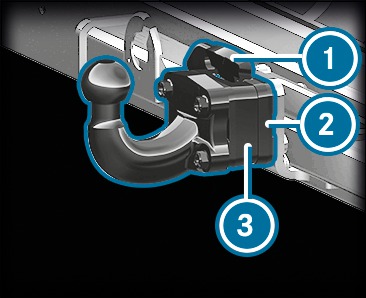
 of ball coupling
of ball coupling  upwards in the direction of the arrow, push it backwards and hold it in this position.
upwards in the direction of the arrow, push it backwards and hold it in this position. 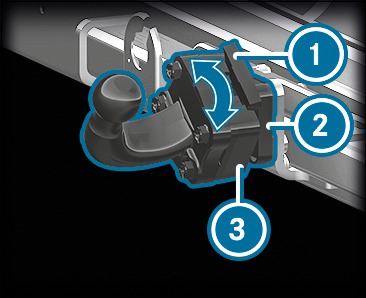
 onto ball coupling mount
onto ball coupling mount  and turn it in the direction of the arrow until ball coupling
and turn it in the direction of the arrow until ball coupling  points vertically upwards.
points vertically upwards.  .
. If the ball coupling is dirty, clean it before installation.
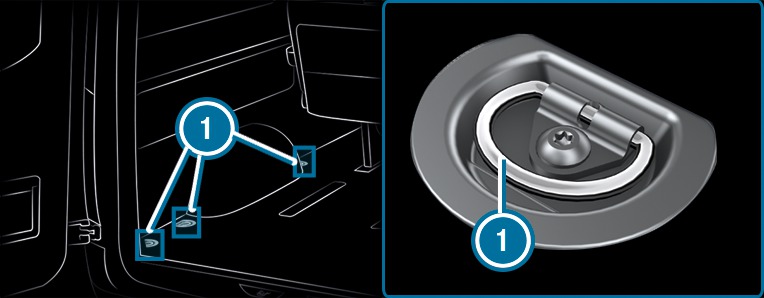

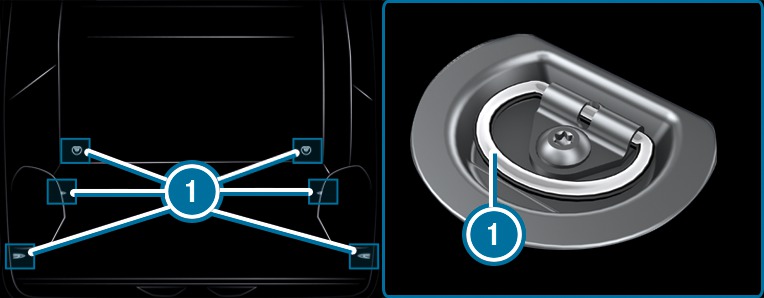

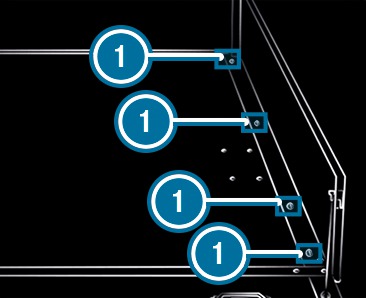

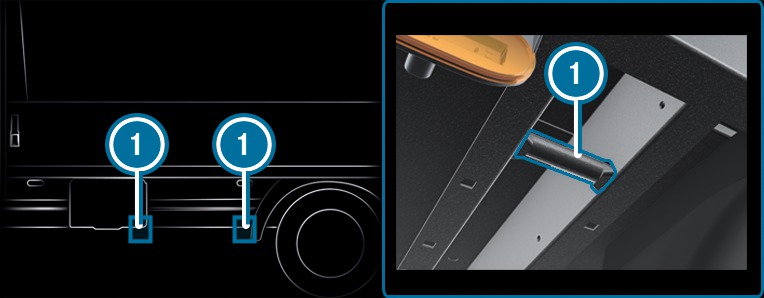

Once you have removed the platform dropsides, you can use the lashing points on the bottom left and right of the crossmember.
Secure loose loads, in particular on the load surface of a platform vehicle, with an approved lashing net or tarpaulin.
Always fasten the lashing net or tarpaulin to all available lashing points. Make sure that the fastening hooks are secured against accidental opening.
If your vehicle is equipped with loading rails in the load compartment floor, you can place lashing rods directly in front of and behind the load. The lashing rods directly absorb the potential shifting forces.
Securing loads on the load compartment floor by lashing them down is only recommended for lightweight loads. Lay anti-slip mats underneath the load to secure the load additionally.








Once you have removed the platform dropsides, you can use the lashing points on the bottom left and right of the crossmember.
Secure loose loads, in particular on the load surface of a platform vehicle, with an approved lashing net or tarpaulin.
Always fasten the lashing net or tarpaulin to all available lashing points. Make sure that the fastening hooks are secured against accidental opening.
If your vehicle is equipped with loading rails in the load compartment floor, you can place lashing rods directly in front of and behind the load. The lashing rods directly absorb the potential shifting forces.
Securing loads on the load compartment floor by lashing them down is only recommended for lightweight loads. Lay anti-slip mats underneath the load to secure the load additionally.

